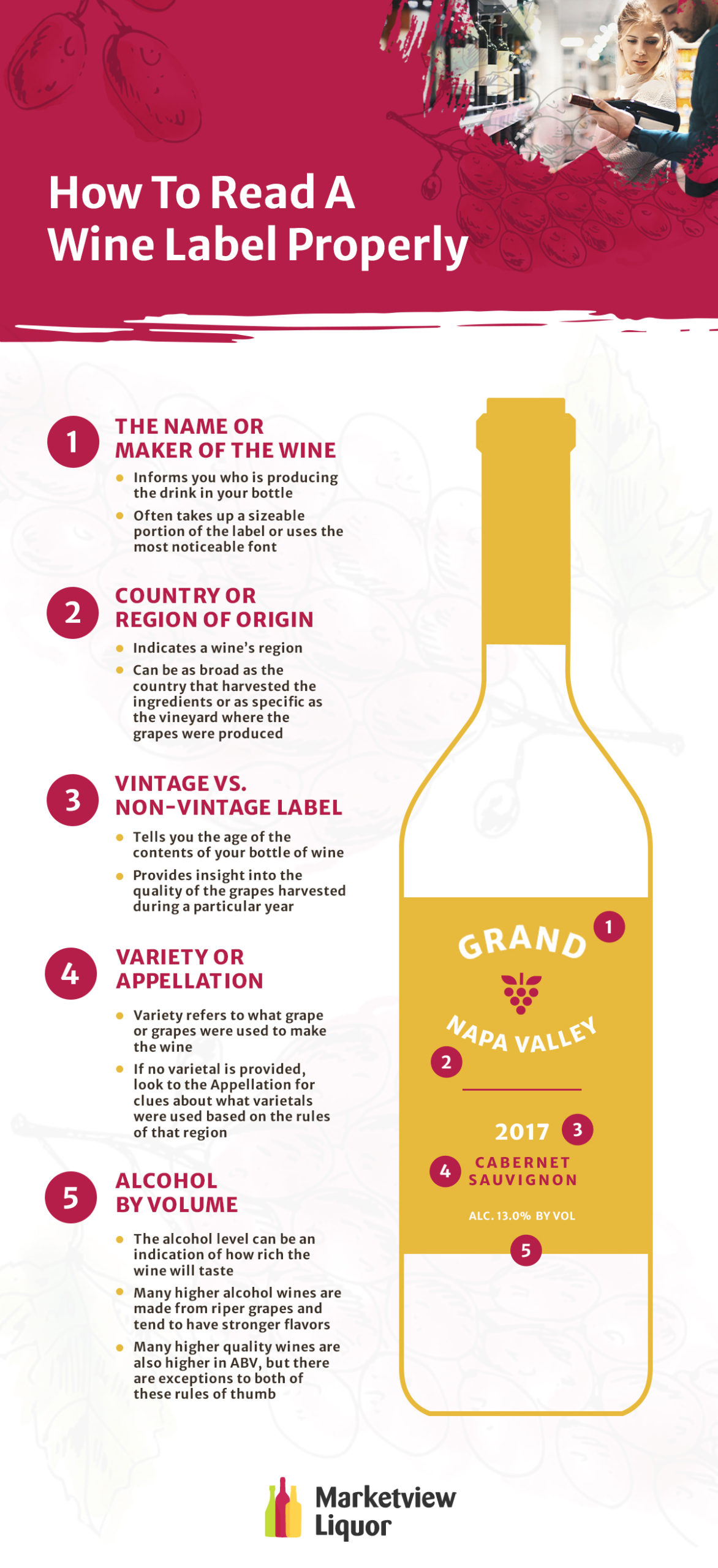When you go out to your favorite Italian restaurant, you may find yourself reading the list of available wines with a sense of frustration. While wine labels may appear to provide an overload of information at times, all the text on a bottle of wine is crucial in helping you decide which drink is best for you.
Whether you’re an avid wine lover or a beginner to the drinking scene who feels a new sense of admiration for the bubbly substance, shopping for the right wine is something any wine lover struggles with at one point or another. Reading all the labels on the front of the wine can be overwhelming, but it doesn’t have to be.
With a little know-how and understanding on how to read wine labels, you’ll be on your way to picking your next savory drink with ease.
Understanding Wine Labels
If you’ve ever wondered where your wine comes from, who made it, or how much alcohol percentage is inside each serving, you can likely find all the answers to your inquiries right on the front of the wine bottle’s label.
While some information may seem superfluous or unnecessary, other aspects of the label are necessary for helping you find the perfect bottle for your flavor, mixes, or occasion. Here are a few meaningful factors to look for.

1. The Name or Maker of the Wine
Perhaps the most crucial piece of information to decipher on a bottle of wine is its producer. Often, the name takes up a sizeable portion of the label or uses the most noticeable font. Foreign producers of wine may place the name of the wine in smaller writing at the top.
The name of the wine informs you who is producing the drink in your bottle, which can determine the resulting quality and flavor. When you find a sparkler worthy of putting in your wine collection, knowing the producer also helps you find similar wines produced by the same maker.
2. Vintage vs. Non-Vintage
If you want to know the age of the contents of your bottle of wine, the vintage label will provide you with this information.
The vintage date provides insight into the quality of the grapes harvested during a particular year. If you find the producer of a bottle of wine has a more flavorful wine during one specific year, this knowledge allows you to choose beverages produced within this particular timeframe.
3. Country or Region of Origin
If you find yourself going to an Italian restaurant and desiring a sip of the same wine within your own home, you might want to search for a wine that was produced in the same region.
The label that indicates a wine’s region can be as broad as the country that harvested the ingredients or as specific as the vineyard where the manufacturers produced the grapes.
Many wine drinkers find a more specified indication of the location produces a wine with higher quality. For instance, a wine label that states the specific vineyard as opposed to the country of origin indicates a more refined and premium quality.
Make Marketview Liquor Your One-Stop Wine Destination
Now that you know how to decipher the labels that line your bottles of wine, it’s time to choose the right sparkling beverage for you! We invite you to browse our varied selection of wine varieties online today. No matter what category your favorite flavors fall into, we have a wine crafted for your preferences.
